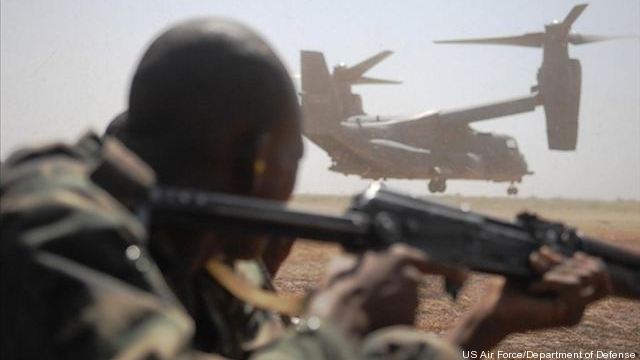 WASHINGTON: The Air Force is turning to its allies for help as it looks to maintain a viable global presence in the face of coming budget cuts, a top Air Force general said today.
WASHINGTON: The Air Force is turning to its allies for help as it looks to maintain a viable global presence in the face of coming budget cuts, a top Air Force general said today.
The service expects to get much smaller as the Pentagon’s struggles to meet the White House deficit reduction goals and possible fallout from the Super Committee’s failure to cut $1.2 trillion from the federal budget, Air Force Lt. Gen. Richard Newton said at an Air Force Association-sponsored event this morning. The assistant vice chief of staff wouldn’t say how small the service may end up being. But Defense Secretary Leon Panetta recently said the Air Force may end up being the smallest its been since its creation after World War II,
That would pose great difficulties for a service that may have to shift from the current ground-focused military strategy in Southwest Asia to an air and sea-based strategy in the Western Pacific. But Newton said he wasn’t worried. The Air Force will still be a “capable” global air power despite its size. It will just need a little help from its friends.
The Air Force currently has military cooperation agreements with nearly 30 countries around the world, Newton said. American airmen are working hand-in-hand with foreign air forces in over 140 countries. That cooperation will only increase as the Air Force itself gets smaller, the three-star added. Closer ties with allied air forces will let the Air Force maintain — or in some cases expand — its global presence without dedicating men or materiel. In return, partner nations can take advantage of training and equipment via Foreign Military Sales from the United States.
India could be a prime candidate for closer cooperation, Todd Harrison, a defense expert with the Center for Strategic and Budgetary Assessment said last week. There are persistent rumors that the U.S. will offer the F-35 to India. Japan is also considering the F-35 for its fighter force and South Korea may buy into the program. Each of those sales could help the Air Force extend much-needed presence into the Pacific.
Increased cooperation could also pay dividends closer to home too, Newton pointed out. Increasing Foreign Military Sales will keep the defense industrial base humming in spite of Pentagon cutbacks, Newton said. Defense giants like Lockheed Martin and Boeing have already set their sights on foreign markets to offset Defense Department reductions. The Air Force general noted the service’s C-130 airlifter could be an ideal candidate for future FMS deals. U.S. military advisers have long noted that one of the top needs for many partner nations is air mobility. Aircraft like the C-130 is also a much more affordable way for allies to get their hands on U.S. military hardware. Fighter jets are much more expensive to purchase and maintain. The C-130 is much cheaper to fly and fix while giving partner nations a much needed capability.
Increasing focus on partner nations may be a new strategy for the Air Force, but it is nothing new for some of the other services. Senior Navy officers have touted variations of a “1,000-ship Navy.” The concept included close cooperation between the U.S. and foreign navies to help the United States extend and maintain its global military influence. Any bets such concepts get dusted off and made new again as the budget cuts begin to bite?
In a ‘world first,’ DARPA project demonstrates AI dogfighting in real jet
“The potential for machine learning in aviation, whether military or civil, is enormous,” said Air Force Col. James Valpiani. “And these fundamental questions of how do we do it, how do we do it safely, how do we train them, are the questions that we are trying to get after.”


























